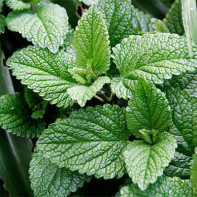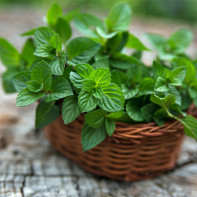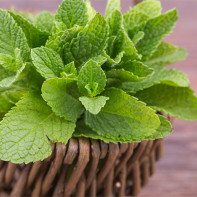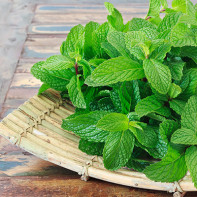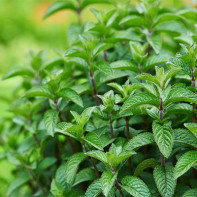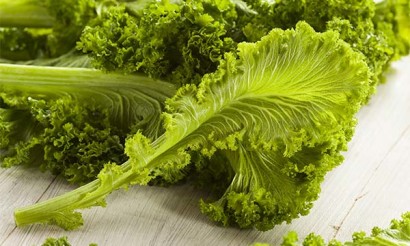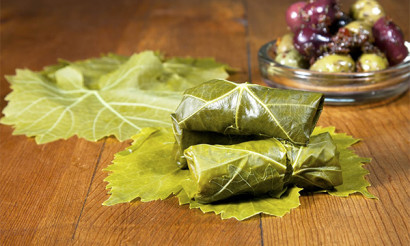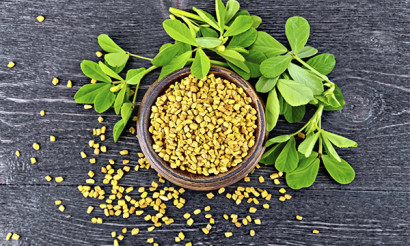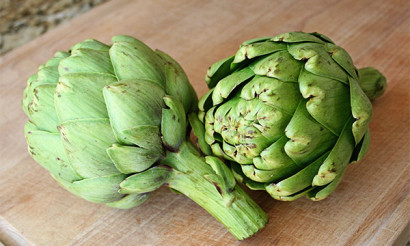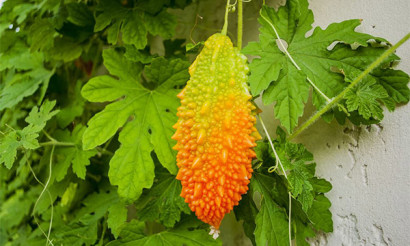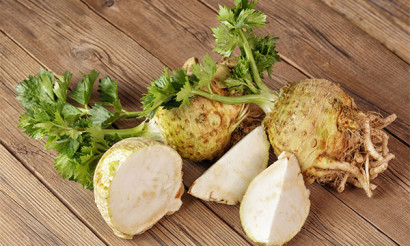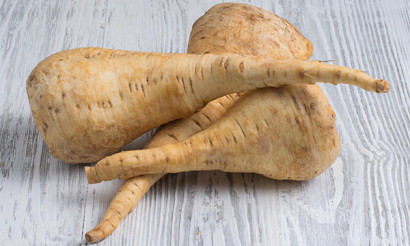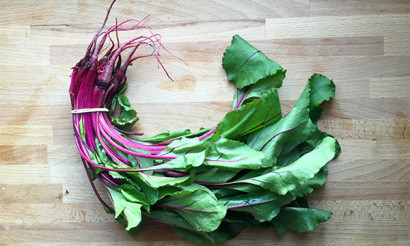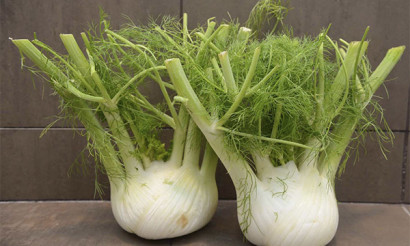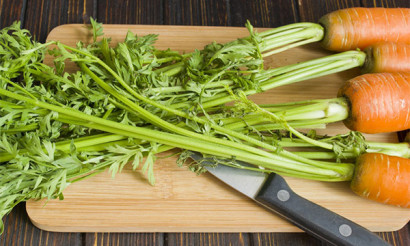Peppermint: useful properties and contraindications
Peppermint is a perennial plant that has pointed oblong-shaped leaves and small flowers. A few centuries ago, people began to brew tea from such a herb. This crop helps to cope with various diseases, and the presence of a pleasant smell of menthol gives the plant a refreshing and tonic effect. The product has long been the subject of study by doctors and scientists.
- Types of mint
- What is the difference between mint and lemon balm
- Composition and calories
- Useful properties of mint
- General benefits
- For Women
- For Men
- In Pregnancy
- Breastfeeding
- For children
- When losing weight
- Peppermint Tea: Benefits and Harms
- How to brew it correctly
- How often can I drink it?
- Can I drink it at night?
- What is the benefit of water with mint?
- Benefits of dried mint
- How to Dry it
- Peppermint essential oil: properties and application
- Benefits of mint jam
- How to cook
- Mint in medicine
- Diabetes mellitus
- With pancreatitis
- Gastritis
- For bowel
- For constipation
- For gout
- For colitis
- For the liver
- For hemorrhoids
- For cholecystitis
- For coughs
- Mint raises or lowers blood pressure
- Recipes of folk medicine on the basis of mint
- Peppermint in cosmetology
- For Face
- For Hair
- Mint Cooking Applications
- Harm and Contraindications
- When to pick and how to store mint
- Can it be frozen?
- Can we give mint to animals?
- How to grow mint at home
- Interesting facts about mint
Types of mint
Useful and harmful properties of mint do not depend on the variety. The only difference is in some features of taste. There are wild varieties of the plant. These include field mint, it grows most often in fields or in forests with sparse trees. It is characterized by a subtle taste and aroma, the smell of menthol is not strongly pronounced.
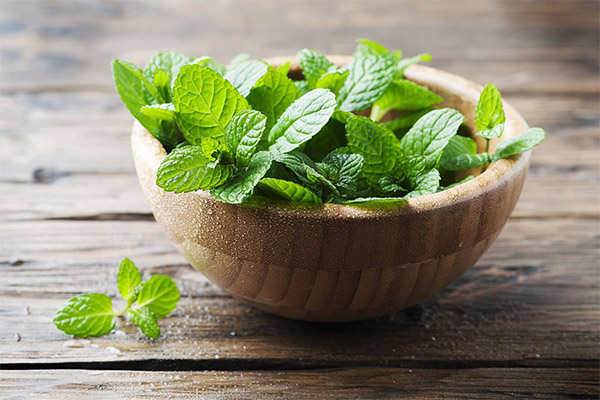
- Catmint grows near roads, on slopes and also in rare forests. It resembles the smell of lemon in taste and fragrance. Cats especially like it.
- For water mint grows in wet areas. Has a distinct menthol flavor. The smell is specific.
- The fragrant variety of medicinal herb grows in the Mediterranean. It has a menthol odor, the taste of this mint is muted.
- Japanese plant grows in Japan, characterized by the presence in the composition of a large number of essential oils. Its flavor and aroma is distinctly mentholic.
There is forest mint, also called oregano or oregano. It grows in forest areas, has no smell and taste of menthol.
Garden varieties of mint are also known. These include the pepper variety. It was bred in the 16th century in England. It is characterized by a bright, slightly bitter taste.
- Curly mint grows in northern Africa. It is cultivated in Russia and European countries. Its flavor is faint.
- The aroma of chocolate mint combines the scents of menthol, chocolate and lemon. The plant prefers sunny and moist areas.
- Mexican spearmint is also called lofted mint. It has a pungent spicy smell, but not menthol.
How mint differs from lemon balm
Outwardly, mint and lemon balm are very similar, and it is very easy for an inexperienced person in this area to confuse these plants. Even if a mistake was made in choosing such a spice, do not worry, because both cultures will not spoil the flavor of the dish in any way. In terms of their useful properties, these herbs also have almost no differences. The main thing is to remember that each of the plants has certain limitations in its use and can cause an allergic reaction in people with high sensitivity. That is why it is important to learn to distinguish between melissa and mint.
Mint is in the form of a long and straight stem, on top of which there are flowers collected in an inflorescence-spike. The color of such a plant ranges from pale lilac to deep purple. The color depends on the natural conditions of growth, the variety of culture. An adult bush can have a height of no more than one meter.
The melissa stem branches from the very bottom, from the part where the plant protrudes to the soil surface. The flowers are gathered in rings that encircle the shoots, which are along the entire length at a short distance from each other. This grass can reach up to 50 centimeters in height, but such a height is quite rare. The leaves of the crop have an ovoid shape.
The two medicinal plants differ not only in appearance but also in smell. Peppermint has a distinct minty fragrance. Melissa has a scent similar to that of citrus fruits, particularly lemon. Bees prefer the second crop, so in summer this plant can be identified by the presence of a large number of these insects.
The two medicinal herbs can also be distinguished by their taste. Peppermint has a refreshing minty taste. If you chew lemon balm very hard, you will taste like lemon. This spice is often added to lemonade. In this case, lemon balm can easily replace the main ingredient of this drink.
As for its health properties, herbalists will tell you that mint is designed to invigorate and tone, while melissa has a calming effect and a beneficial effect on the functions of the nervous system. This is due to the composition of these herbs. Mint has essential oils, saturated acids, fats and dietary fiber, as well as vitamins A, C, minerals such as Fe, Cu, P.
The composition of melissa is not as rich, but it also contains a number of compounds that have a positive effect on the human body. Of the minerals here are found magnesium, manganese and iron. Of the vitamins in mint, there are all kinds of B-group, as well as small amounts of retinol and ascorbic acid. In addition, molasses contains fats.
Dietary fiber and esters in molasses are absent, so you can enrich the body only with vitamins and mineral components.
Composition and calories
Peppermint has gained great popularity in the manufacture of medicines, in addition, it is widely used in the culinary sphere, as well as in the field of cosmetology. This variety is the result of the crossing of two varieties - water mint and garden mint. Nowadays, it grows everywhere, so it is not difficult to obtain it and use it for its intended purpose.
In particular, it is worth noting the chemical composition of the product. First of all, it should be noted that mint contains a lot of essential oil. The leaves and stem are enriched with menthol, a component that provides the spice with a specific flavor and aromatic properties.
In addition, a number of acids can be identified in the herb, such as ursolic, ascorbic, caffeic, oleanovic and others. The plant component also contains flavonoids, amino acids and tannins. Of the amino acids the plant contains arginine and rutin. Mint is not deprived of vitamins such as C, A, E, as well as the B group.
Fresh and dried raw materials contain a large list of mineral elements. This list includes K, Na, Zn, Mn, Fe, Cr, etc.
Not only essential oil, fresh or dried leaves, but also the seeds of the herb can be used in medicinal practice. They contain elements that restore the function of the gastrointestinal tract. This is due to the fact that most of the pharmacological drugs used to eliminate heartburn and gastritis have a minty flavor.
The caloric value of the fresh plant is 67 kcal per 100 grams of herb. However, usually when consuming mint, this indicator is not taken into account. After all, a huge list of useful characteristics can override any indicators of caloric value.
Useful properties of mint
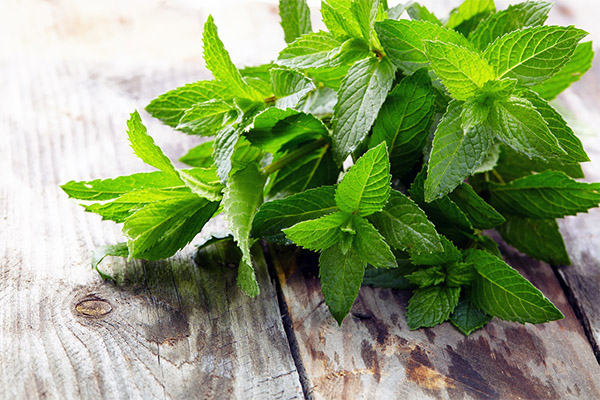
General benefits
- The most important benefit of mint is the ability to normalize the functions of the nervous system. A cup of tea from the leaves of this plant after a hard day at work will help to calm down and improve health. In addition, mint drink is used to eliminate insomnia and fatigue.
- Peppermint helps to strengthen memory by stimulating brain neurons, improves concentration and visual perception. Tea from the leaves of this medicinal herb is especially useful for people of advanced age, who have a risk of dementia.
- This plant is able to dilate the blood vessels, resulting in improved blood circulation, cholesterol deposits are removed. This is a reliable prevention of atherosclerosis.
- Mint refers to natural products, it is often used as a substitute for synthetic elements in medicines. It is also a part of chewing gum. Mint is able to disinfect the oral cavity and prevent the development of cavities.
- Known benefits of peppermint leaves for the gastrointestinal tract as well. They increase appetite and stimulate the secretion of gastric juice, which ensures better digestion of food consumed and protects against fermentation processes.
- Another useful property of this plant is the ability to sorb toxins, radionuclides, heavy metals and remove them from the body. In addition, the product has a beneficial effect on the function of the gall bladder, liver and kidneys, as well as the genitourinary system.
- Prepared from the mint leaf pulp is used in cosmetology for acne, various rashes on the skin. Decoction of this plant can be used as a hair rinse, as it helps to eliminate dandruff and itching.
- This is just a small list of diseases that can be cured with mint. To this list you can also add inflammation of the oral mucosa and tooth decay, inflammation of the stomach mucosa, frequent headaches, menstrual discomfort.
- Peppermint is used to lower blood pressure readings in hypertensive patients.
- The culture is widely used in gynecology. The leaves of the herb are useful for respiratory diseases. In addition, tea with the use of this plant is effective for nervousness and unreasonable anxiety.
- Nutritionists often recommend using this plant for weight loss. Decoctions based on this spice are able to regulate the metabolism, enrich all cells of the body with oxygen, burning fat deposits.
For women
Popularly, mint is called the "female herb", as it is especially useful for the weaker half of humanity. Thus, this medicinal plant is able to eliminate all unpleasant symptoms during menopause, get rid of toxicosis. In addition, the culture will help to relieve inflammation associated with the female genital sphere. The product will also help to alleviate the condition during menstruation. Porridge, prepared from the leaves of the grass, will relieve a nursing woman from stagnant milk.
The herb is also widely used in cosmetology. Decoction and infusion will strengthen the curls, tighten pores, smooth fine wrinkles, remove oily sheen of the dermis.
For men
As for the male half of mankind, they can not fully appreciate all the healing properties of the mint plant, because it most often has a negative effect on them. This is due to the fact that the plant contributes to a decrease in testosterone, a decrease in potency and sexual desire.
You can still use drinks based on this plant, but you should do it only during the treatment of any disease. The use of such a healing remedy for a week will not harm the male body. However, uncontrolled drinking of mint tea without a special need is not recommended.
In pregnancy
Mint is a plant that should be treated very carefully when including it in food. In such a case, it is important to consult a doctor. Like any other product, this plant is characterized by advantages and disadvantages.
It can be harmful during pregnancy, because the plant increases uterine contractions. It stimulates the synthesis of female hormones, which leads to the tone of the genitals.
Regular inclusion of the plant in the diet helps to reduce blood pressure. It contains hypotensive enzymes. This can lead to a severe drop in blood pressure readings, so you need to be careful.
The chemical composition of peppermint can lead to the development of an allergic reaction. If even before pregnancy a woman was not allergic to this crop, during the period of pregnancy it can happen.
One or two cups of mint tea a day will help a pregnant woman to get rid of toxicosis. The drink normalizes the functioning of internal organs and reduces the feeling of nausea. Consumption of tea improves sleep and relieves nervous tension.
When breastfeeding
A woman in the period of lactation without the recommendation of a specialist is allowed to use mint only as aromatherapy. After consulting a doctor, small doses of mint may be prescribed internally to increase the amount of milk. To obtain such a remedy, mint should be mixed with dill seeds or oregano.
For children
Up to three years of age, a child is contraindicated for peppermint tea. If the baby is not very active, this plant should be limited to 5-6 years, as it can lead to drowsiness and lethargy.
Also, peppermint can cause allergies in children. Before giving such a tea to a child, it is necessary to consult with a pediatrician.
For young children, you can prepare soothing decoctions based on peppermint or add them to the bath when bathing. This will help your baby relax and calm down. Such a remedy can be used even up to one year.
To prepare such a decoction, take a collection of oregano, mint and calendula flowers in equal amounts. Pour 50 grams of such a collection in three liters of boiled water and insist for 30 minutes. Then strain the solution and add it to 10 liters of water. Such baths should be used to bathe the child 2-3 times a week before bedtime.
For weight loss
Mint can be used in the diet, as it has many positive properties for weight loss. This product activates metabolic processes, increases gastric peristalsis, prevents fermentation and putrefaction, has an antispasmodic effect on the smooth muscles in the intestines. In addition, the plant provides an outflow of bile, taking part in lipolysis, has a laxative effect. Also the medicinal herb calms, while reducing the production of the hormone cortisone, which is the most important enemy in the weight loss process. Peppermint is characterized by low calories.
You can prepare a smoothie using such a plant and drink it before a workout. This will increase the effectiveness of exercise, as it will give vivacity, increase efficiency and reduce fatigue.
At the same time, thinners should remember that the internal consumption of mint products increases appetite and activates the activity of the digestive glands. It is for this reason, you should not eat it before the main meal, otherwise during the meal will exceed the allowable norm.
You can do a discharge day using one drink - mint tea. In one day you can drink one and a half liters of tea. Weight loss is provided by removing excess fluid from the body and regulating the digestive process. Carry out such days of discharge can be once every two weeks.
It is possible to conduct wraps using peppermint. Menthol in its composition has an irritating effect on the thermoreceptors. This causes a feeling of cooling, resulting in the constriction of blood vessels, which helps to improve blood circulation.
Tea with mint: benefits and harms
The main active ingredient of mint is menthol. Tea with the inclusion of this medicinal plant has a soothing and strengthening effect. The drink reduces pain syndrome, eliminates spasms, restores metabolic processes, regulates the functions of the gastrointestinal tract and the cardiovascular system.
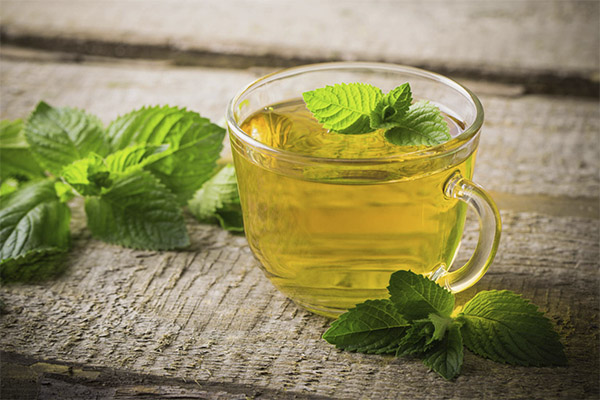
Harm can be caused by excessive consumption. This can cause heart pain, migraine, sleep disorders, weakness. Consumption of tea in large quantities (more than three cups per day) negatively affects male health and the ability to conceive.
How to brew it correctly
To prepare peppermint tea with preservation of all the useful qualities, you should follow some rules. Prepare it in a porcelain container or in a glass one. Mint should be poured with water after five minutes from the moment of boiling. After the drink should insist for 15 minutes. To get a glass of tea, you should take 1 tsp. of leaves or 0.5 tsp. of dried mint. Drink the prepared drink only in freshly prepared form, without the addition of sugar.
How often you can drink
The resulting mint infusion is not recommended to drink more than once a day. Also, you should not prepare such a tea every day. It is enough to drink it 2-3 times a week. So you will be able to get the maximum benefit for the human body and not to harm it.
The daily use in the diet of such tea can cause unpleasant phenomena. First of all, it is important to remember that peppermint tea lowers blood pressure, which can result in weakness and drowsiness. Also such an infusion can lead to an exacerbation of varicose veins. An unpleasant consequence of frequent consumption of peppermint drink will be heartburn and headache. Men may have problems of a sexual nature.
Can I drink it at night?
You can also consume such a drink before going to bed. Tea will have a soothing effect. However, you should not drink more than one cup, as you will have to go to the bathroom frequently due to the diuretic property of the product. One cup of tea will help you to relax and fall asleep soundly. Of course, this drink will not act in the same way as sleeping pills of pronounced action, but it will calm the nervous system before going to bed.
How Mint Water Works
Water with the addition of mint promotes weight loss, improves digestion. The drink can be used in case of intestinal disorders. Also liquid with mint cleanses the liver from toxic compounds. Due to the ability of mint to improve the outflow of bile product will help get rid of jaundice on the face and eye membranes. Peppermint is a strong antioxidant.
Peppermint water strengthens the protective shell of the body. To improve the immune system, it is recommended to prepare an infusion, which should be drunk regularly, especially during seasonal colds. The vitamins in the composition of such a plant will allow you to more easily endure such a dangerous period for health.
It should also be noted that peppermint water is an excellent cosmetic for washing.
To prepare such a useful drink, you need to take a small amount of crushed mint and pour it with water heated to 60 degrees. The container with the liquid should be kept in a dark place for one day. Then the illuminating drink should be strained, after which it will be ready for consumption.
The benefits of dried mint
Tea made from dried mint leaves will help to eliminate irritability when dieting. Regular use in food dried leaves of this plant helps to cleanse the body of toxic compounds. Dried mint in combination with olive oil restores skin after burns. Dried mint is used in gynecological pathologies such as hormonal and menstrual disorders, diseases of the gall bladder and respiratory organs, abnormalities of the functioning of the digestive tract and nervous system.
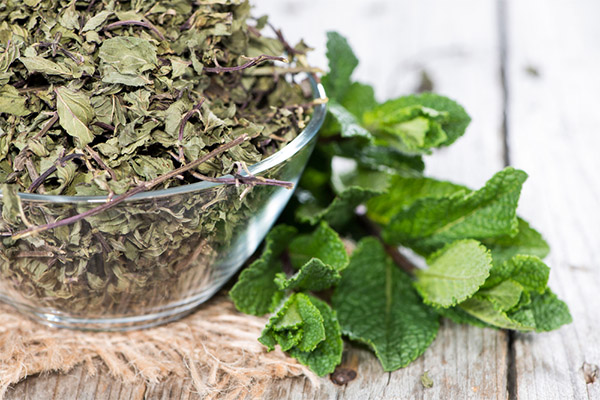
How to Dry
Collected raw materials can be dried in several ways. For example, you can gather the plant in a bundle, pulling it with a rubber band. After that, you should make a hook from a wire, for which the collected mint will be hung on a rope. Drying in this case should be carried out in a shady place.
You can use an oven to obtain dried herbs. In this case, the raw material should be distributed evenly on a tray and placed in a dry place in the shade. The oven should be turned to minimum temperature and the mint should be placed there for several hours. Leave the appliance door ajar.
Drying can be done in the attic. To do this, the floor should be covered with paper and spread the mint culture on its surface. In this case, the windows should be opened regularly.
Since mint has a pronounced aroma, it is contraindicated to dry it in living rooms. This can lead to headaches.
Peppermint essential oil: properties and uses
- Peppermint oil is characterized by a tonic effect. The fragrance of such a remedy will restore strength, eliminate stress and increase mental activity.
- In migraine you can rub the forehead, the back of the head and temporal areas with this oil, and then apply a cold compress to the head.
- It is recommended to have a handkerchief with a few drops of the essential substance on it at all times, so that you can inhale the fragrance of such a remedy in case of nervous disorders.
- Peppermint oil can help a person with fainting if used in place of ammonia.
- To reduce abdominal pain, bloating or heartburn, you can drink a glass of water with a few drops of the essential solution.
- To restore the rhythm of the heartbeat, you need to add 5-6 drops of the oil composition to the bath.
- Inhaling peppermint oil helps to eliminate nausea.
- The inclusion of 6 drops of peppermint essential oil per 10 ml of regular massage oil will relieve the feeling for bruises, rheumatism.
The benefits of peppermint jam
Peppermint makes a tasty and useful jam. It is recommended for people who often face migraines. This dessert is effective for nausea and tachycardia. The benefit of such a dish is also that it has an expectorant property. Tea with such a delicacy will help to reduce the fever. Another advantage of peppermint jam is that it can be used in children. It will be an excellent substitute for bitter pills. However, the permissible rate is 3-5 tablespoons per day.
Consume such a treat should be in small quantities, to get only the benefits of the product, without harming the body. This dessert is contraindicated for people with asthma.
The consumption of the product in unlimited quantities can cause obesity. In some cases, mint jam causes heart pain.
How to cook
The main components that are required to make mint jam are directly mint leaves, water, granulated sugar and citric acid. The cooking process is very simple. To do this, you just need to pour water over the plant, add lemon, sugar and cook the mass over low heat. The resulting dessert can be used in cooking and also used as a medicine. Due to its special taste, this delicacy began to be added as an appetizer to second courses.
Mint in medicine
This medicinal plant is used to obtain various preparations, such as lollipops, alcohol pepper tinctures, essential oils for inhalations, etc. Remedies based on such herbaceous plant are used for abdominal discomfort, toothache, migraine, gastrointestinal pathologies.
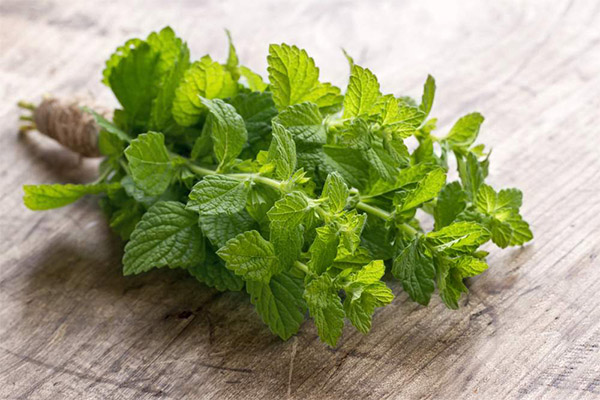
According to the results of recent studies, it was found that this product has anti-cancer properties. For this reason, now made products based on peppermint extract for the prevention of the development of cancer.
This healing herb protects the body from the effects of radioactive substances, restores the functions of the immune system, has an anti-inflammatory effect.
In addition, peppermint oil is characterized by antispasmodic, antiseptic and vasoconstrictor properties. This makes it possible to include this substance in preparations intended for the heart.
In diabetes mellitus.
Peppermint herb is useful for people suffering from diabetes. The plant helps to reduce blood glucose levels. However, representatives of the stronger sex, who have hypotension or varicose veins, even in the case of diabetes, it is not recommended to use such a product.
In pancreatitis
In this pathology, mint is used for therapeutic purposes. The herbaceous plant is able to stimulate the synthesis of bile, eliminate smooth muscle spasms and provide regeneration. In the severe course of pancreatitis, treatment with herbs is acceptable only after the completion of the usual treatment with drugs. Herbs are more useful for preventive purposes, rather than in the therapy of a neglected disease.
In gastritis
If this pathology is detected, mint should be used with caution. Compliance with permissible norms will not harm human health. Decoction or infusion of this culture will help soothe the mucous membrane of the stomach and relieve pain. The ether in the composition of the herb is able to reduce the acidity in the stomach. The extracts present will help regulate the appetite.
It should be remembered that self-medication is contraindicated. The use of peppermint for medicinal purposes should be carried out only after consultation with a specialist.
For the intestines
According to the results of some studies, it has been found that the feature to relax the muscles relates peppermint to the category of effective remedies that are used to relieve the symptoms of irritable bowel syndrome. This condition is accompanied by constipation, diarrhea, bloating and colic. It was also determined that most people who took peppermint capsules every day had a reduced incidence of the disease.
For constipation
Peppermint is known to be able to increase peristalsis. From this plant, you can prepare an infusion. To do this, you need to take four tablespoons of mint leaves and pour them with boiling water. The solution should be infused for several hours in a tightly closed container. The ready remedy should be taken 0.5 cup three times a day to get rid of such an ailment as constipation.
When gout
With this pathology, a constant removal of salt from the body is necessary. Water alone will not solve this problem. Therefore, you can use medicinal plants for cleansing. Regular use of decoctions and teas will help eliminate urates, which are salts of uric acid. Remember that for such purposes, it is important to use herbs that have anti-inflammatory properties. You can prepare a useful gout infusion using several varieties of herbs. These include peppermint, St. John's wort, nettle, herbs of rosemary, succession and cranberries, as well as linseeds. All ingredients should be taken in equal parts. Several tablespoons of such a collection should be poured over boiling water and insist for a day. Ready remedy should be drunk 0.5 liters per day.
With colitis
Colitis is an inflammation of the mucous membrane of the colon. The disease can occur in acute and chronic form. To alleviate the symptoms of this pathology, it is recommended to pour 30 g of mint herb with 2 glasses of boiled water and insist 30 minutes. After the specified period, the liquid must be strained and consumed by 100 ml twice a day before meals.
For the liver
As already mentioned, mint is able to increase the outflow of bile, which expresses the beneficial effects of the plant on the liver. In addition, this plant component stimulates the breakdown of cholesterol and reduces its index in the blood. To get the therapeutic effect of the use of mint, it is enough to drink a cup of mint tea for ten days.
In hemorrhoids.
In order for herbs to help cope with such an unpleasant problem as hemorrhoids, they must have anti-inflammatory and analgesic properties, have antibacterial, restorative and sedative effects. Peppermint has these qualities. Therefore, it can be used for this disease.
When cholecystitis.
If a person is found to have cholecystitis, peppermint will come to the rescue. To prepare a remedy based on this plant, pour a tablespoon of raw materials with a glass of steep boiling water and insist for half an hour. After that, the composition should be strained. The resulting infusion should be drunk in small sips throughout the day. A contraindication to the use of this composition is low blood pressure.
From the cough
Coughs can also be cured, using the mint herb. Medicine based on this plant is able to soften the mucous membranes, kill microorganisms and strengthen the immune system. For treatment, you can use peppermint teas, decoctions and infusions, conduct inhalations with essential oil of the herb.
Peppermint raises or lowers blood pressure
Peppermint lowers blood pressure, so those who suffer from hypotension should limit the use of such a herbal component. In order that mint does not harm the body, it is allowed to drink tea from this herb once a day and refuse to use infusions, inhalations and baths.
In the presence of a headache, which appeared due to low blood pressure, the plant extract of mint will only worsen the condition of the patient, causing nausea and vomiting.
Peppermint-based folk medicine recipes
- In order to cure diarrhea, you need a handful of fresh mint raw materials brewed in a glass of boiling water. The mixture should infuse for a couple of hours. After that, you need to filter the liquid and divide it into two doses. The remedy should be drunk at lunch and in the evening.
- In case of intestinal upset, it will be enough to mix a tablespoon of dried mint leaves with a glass of steep boiling water. The mass should be infused for three hours. The finished infusion must be strained, after which it can be drunk as normal tea.
- In the season of colds, vitamin deficiency and reduced immunity will be useful mint. On the basis of herbaceous culture you will need to prepare a decoction, add to it a small amount of honey. Such a remedy will help to strengthen the protective function of the body, remove phlegm from the respiratory organs, eliminate the throat and lower the temperature.
- With insomnia, high nervousness and excitability, it is recommended to drink peppermint tea a couple of times a day. As a supplement you can include in such a drink dried fruit or honey.
- Often peppermint is used by people with nausea and nervous overexcitation. To get rid of such ailments should be ground a tablespoon of dried mint leaves to powder and pour them with vodka in a ratio of 1:20. The resulting mixture should insist for two weeks, after which you should take 15 drops three times a day. You should drink such a tincture with a small amount of water.
- If you have problems with excess weight and cellulite, it is recommended to take a bath with mint. Such procedures should be performed several times a week. To do this, you just need to fill the bath as usual and add fresh or dried mint herb. The bath should be taken for 30 minutes. In addition, this process will help to deal with sweating and make the skin more even.
Peppermint in cosmetology
For cosmetological purposes, peppermint herb is used to combat acne, to cleanse and tone the skin, to accelerate blood circulation and to obtain a firm and elastic dermis. You can use such a remedy in the case of problematic skin or mixed type, as well as in the presence of age-related changes. Contraindications are individual intolerance, the period of pregnancy and lactation.
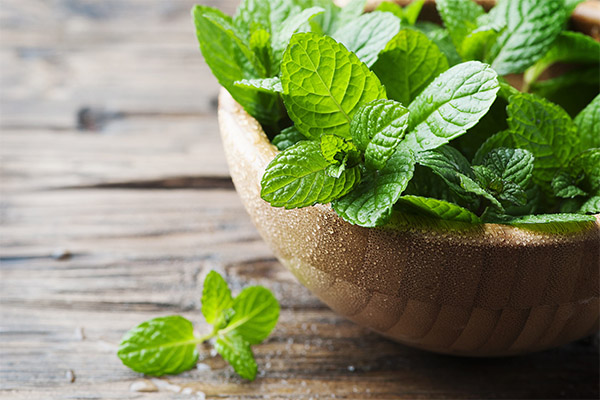
For the face
To maintain the tone of the dermis, it is recommended to rub it every day with peppermint ice cubes obtained from the infusion. To make such a cosmetic, pour 0.5 liters of raw materials and insist a few hours. Then the composition should be strained and poured into ice molds. Such a method will help restore blood circulation and protect against the development of inflammatory processes. If this solution is consumed as a means to wash, you can improve the condition of the dermis in a short time, while wrinkles and age spots will not be as noticeable.
You can prepare a rejuvenating mixture for the face. To do this, mix a glass of oatmeal with two tablespoons of mint infusion and three spoons of heated milk. The resulting mask should be applied to a cleansed face for 15-20 minutes. Perform such a procedure is best performed before going to bed.
For hair
Known curative properties of mint and for hair. Thus, this plant can be used in the presence of dandruff, increased greasiness of hair, as well as in the case of brittle and dull curls.
- You can include in the shampoo mint oil in the ratio of two drops of oily liquid in 10 grams of detergent. Such a composition will help increase blood circulation, stimulate strand growth and reduce inflammation, relieve itching and irritation.
- Peppermint is used to obtain a rinse. In this case, you need two tablespoons of mint raw materials pour a glass of hot water and boil for 15 minutes. The resulting mixture should be cooled, filtered. You can add a few drops of peppermint oil to it. After the usual washing of the head, you should rinse your hair with such a remedy, lightly rubbing it into the roots of the curls.
- For dyed and damaged locks will be helpful to mask, for the manufacture of which you need two spoons of castor oil to add a couple of drops of mint. The resulting mask applied to the hair. Your head should be covered with a film. Such a composition should keep about 35-40 minutes. After that, the hair should be washed with shampoo.
- The following recipe will be useful for oily hair. You need to mix two egg yolks, a teaspoon of lemon juice and a few drops of peppermint essential oil. Such a mask to keep on the head about 20 minutes, then wash off with a shampoo.
Culinary Uses of Peppermint
In the culinary field, curly mint or apple mint is most commonly used. Such varieties do not release bitterness when heated. However, peppermint is also in demand.
Fresh leaves of this plant are used as a dressing to meat and vegetable dishes, to salads, mint is added to various cocktails, ice cream, candy. In addition, the spice is used as a decoration. Dried herb is used most often for preparing a healing tea, infusion, as well as a spice for meat, sauces and baking.
Mint is recommended to use as an independent spice, not combining it with other spices. In dishes mint is added usually 5-10 minutes before cooking. Per serving, 1-3 g of fresh herbs can be used, but if the leaves of the plant in dried form, the dose is 0.2-0.4 g.
Harm and contraindications
It is forbidden to use mint in the diet of children under five years of age. This is explained by the fact that such greens contain a large number of biologically active components. They can have different effects on the still immature body. This may manifest itself as an increased burden on the internal organs.
It has been known for a long time that the plant has a negative effect on men's health. The product reduces potency and libido. This occurs because of the strong sedative effect of the plant. However, peppermint can cope with emotional tension.
Regular use of peppermint can lead to problems related to conception in women. If there are any diseases, this plant can only make the situation worse.
It is proved that mint has a negative effect on the body of pregnant women. Therefore, it is important to consult a doctor before using it. It is acceptable to drink weak tea with mint.
It is also necessary to remember about individual intolerance. The plant can lead to some complications if you do not adhere to certain norms. In such a case, it is necessary to exclude any products containing the extract of such a herb. Otherwise, a severe headache, nausea, vomiting will appear.
Peppermint will prove useful only in case of compliance with the daily norm. If you do not adhere to these recommendations, it is possible to harm the body. Do not self-medicate with the use of this medicinal plant.
When to harvest and how to store mint
To preserve all the medicinal properties of mint and its taste, collect the plant should be at the time when the buds are already formed. The flowering period is also acceptable for harvesting. In this case, it is recommended to cut about 20 cm from the stem of the herb. Up to 3-4 harvests can be harvested during the summer. It is possible to regularly carry out pruning of such bushes.
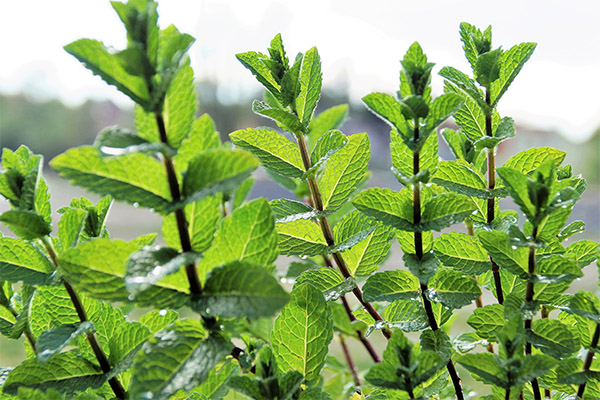
You can store the greens by the so-called "wet" method. This will help to preserve the freshness of mint for a week. To do this, you need to moisten a towel, wrap this spice in it and send it in this form to the refrigerator. You can simply place the bundle in a vase with water. This method will allow you to preserve the freshness of the spice, as well as saturate the room with a pleasant minty aroma.
To preserve for a long time the usefulness of the healing culture, it is recommended to perform drying of mint. This method will allow you to store the plant for several years. However, it should be noted that over time, the raw material begins to lose its useful components, so it is better to replenish the product every year.
Is it possible to freeze
Modern refrigerators make it possible to freeze herbs, vegetables and fruits effectively and qualitatively. You can use this method to freeze mint. Making ice cubes with the spice would be a good option.
Can I give mint to animals?
Peppermint leaves should be present in the diet of animals in small quantities, in the form of a food supplement. When preparing a menu for the doggie, it is important to take into account that the digestive tract is not able to fully digest this type of greens.
Peppermint will help to solve certain problems of the pet, in particular, the use of this plant will restore fresh breath, which is impaired by food.
The use of peppermint in food will lead to strong salivation, which will normalize the acidity in the dog's mouth. The spice is also able to have a calming effect on the nervous system, which is necessary when the animal is excitable or shows aggression. In addition, peppermint will improve the appetite of the pet and have a stimulating effect on intestinal activity. Another advantage of using this plant in the diet of dogs is that it has an anti-inflammatory effect, which is especially relevant in the presence of inflammation or tumor formation on the skin of the animal.
Not every dog will eagerly eat mint, some representatives do not like plants that have a brightly saturated flavor. To ensure that mint is digested well, does not cause problems with the digestive tract and benefits the animal, it is recommended to give dogs no more than 1 tsp per day.
The herb should not be given in case of diseases of the urinary system, as well as during pregnancy of the pet. Peppermint may cause individual intolerance in some dogs, resulting in an allergic reaction. Uncontrolled use of this medicinal herb may cause gastrointestinal disorders, leading to diarrhea.
As for the question of whether cats can be given catnip, in this case you should be guided by the intuition of the pet itself. Because everyone knows that cats, which live in nature, are able to independently find those plants that they need at a certain period of life. That is, the animal itself finds the plant that will help it cure a disease or remove parasites.
Due to its chemical composition, mint is considered a valuable part of the rabbit's diet. The leaves and stem contain essential oil. It contains menthol, which gives the herb a fresh, specific smell. Useful this plant for rabbits is that it helps improve appetite, reduce the acidity in the stomach, have an antimicrobial effect and eliminate cramps.
How to grow peppermint at home
Peppermint can be grown from a mature bush. To do this, you should choose a small-sized bush from the garden from the fall. It should be transferred to a pot along with a small amount of soil. The pot in this case should be quite large, since the plant has a large root system.
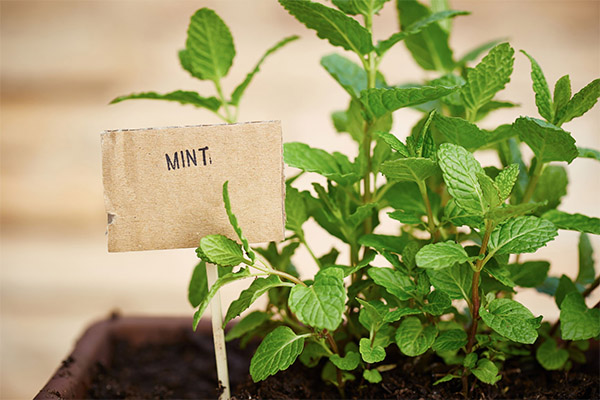
You should also add humus to the container so that the bush does not wobble. Along with this, the humus will act as a fertilizer for the plant. Next, you just need to regularly water the bush and take care of additional lighting. For the culture to develop normally, it needs about 12 hours of daylight. Otherwise, the leaves will become pale, and they will have almost no smell.
It is recommended to water the mint only when the top layer of soil dries out. Herbaceous plant does not prefer excessive moisture in the roots, so be sure to drain excess water from the tray when watering.
The optimum temperature, at which the mint will normally grow, is considered 25 degrees. Otherwise, the plant will begin to turn yellow and eventually wither away. And even additional attempts to bring it back to life with watering will be in vain, because the roots will begin to rot.
Experts advise to constantly snip off the young leaves. This is done so that the mint culture blooms new shoots.
If the garden does not have a bush that could be transplanted into a pot, it is better to buy flat and fresh twigs in the store and grow mint from cuttings. In such a case, the lower leaves from the branch must first be cut off. They can be used for their intended purpose. Next, you need to pour into a glass or plastic cup with clean water that has previously settled. In this container should be placed a grain of any substance designed to stimulate the development of the root system. Aloe juice or zircon is suitable for such purposes.
In this cup, you need to put the prepared twigs, which have had their lower leaves ripped off. It remains to wait for the appearance of roots. It is important to observe the same temperature conditions and lighting as in the previous method.
The cuttings can be planted in a pot with soil after at least five rootlets have appeared. Then the plant should be cared for in the usual way. Regular watering, timely loosening of the buds and removal of fresh leaves are important. It is not necessary at all to buy the soil in the store. It can be very easily prepared by yourself. To do this, you need to take equal amounts of greasy humus, sand and soil under the birch. To make the soil friable, you can add a small amount of peat. One handful per three kg of soil will be enough.
At the bottom of the pot there should be a drainage layer. But you should not use moss or eggshells for this purpose. They will be compressed, so there will be no benefit. In this case, it is better to use fine gravel or pebbles.
When growing mint, it is important not to let it bloom. This will lead to the fact that she will lose all her taste and aromatic qualities.
To get tender greens without fibers, you can grow mint in the house from seeds. To do this, you also first need to prepare the soil, and then plant the seeds to a depth of no more than 5 mm. Moisten the seeds with a sprayer. Next, the container with mint should be closed with a lid. After 10-12 days, sprouts appear. After that you can remove the lid and move the pot to a bright place. It is important to protect the plant from direct sunlight so as not to burn the foliage. At first, you should only moisten the planting lightly. When the leaves appear, you can transplant the sprouts into separate cups.
Interesting facts about mint
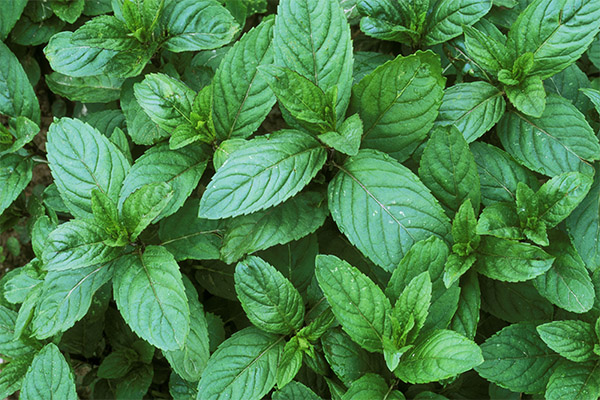
- In ancient Rome, most women used mint as a perfume. For this purpose, the fair sex pinned the leaves of the plant to their clothes. It was also customary to sew such raw materials into pillows. This was done so that the aroma of the herb helped her to sleep better.
- Mint helped to increase the shelf life of milk. Thus, if you add a couple of sprigs of mint plant to such a drink, it will not sour for a long time. However, in this case, the milk will get a flavor peculiar to mint products.
- You can use peppermint to repel insects. It is enough to put a small bundle of this plant in a vase. It has an irritant effect on most insects. The most popular superstition is that the leaves of this plant attract money.
- The most popular superstition with the use of mint is that the leaves of this plant attract money. It is believed that the presence of mint in your wallet will help make sure that there will always be money in it. However, even if this does not happen, a pleasant menthol aroma will reign in the wallet.
«Important: All information on this site is provided for informational purposes only for informational purposes only. Please consult with a health care professional before using any of our recommendations. health care professionals before you use any of the recommendations. Neither the editors nor the authors shall be liable for any possible harm caused by materials."

